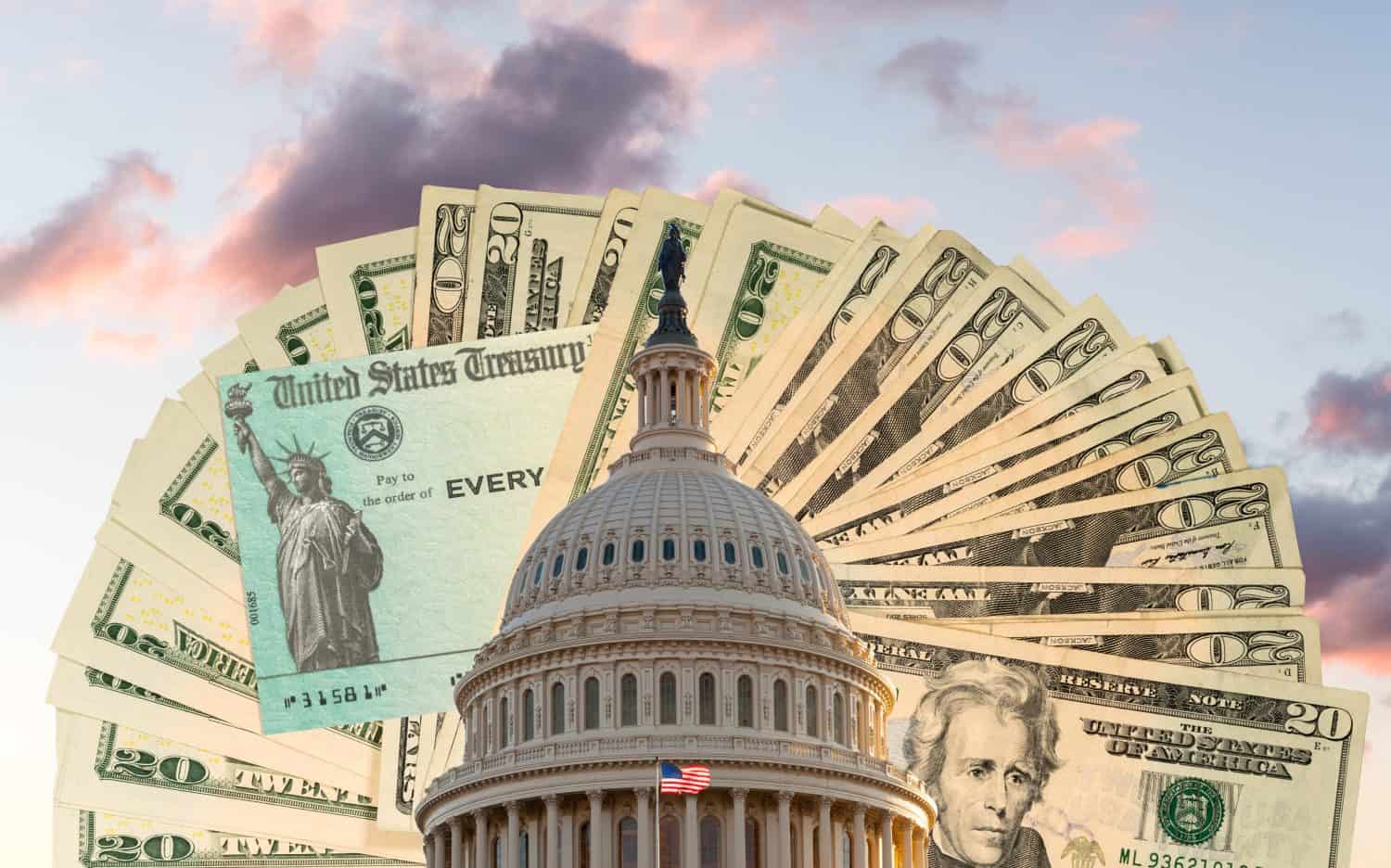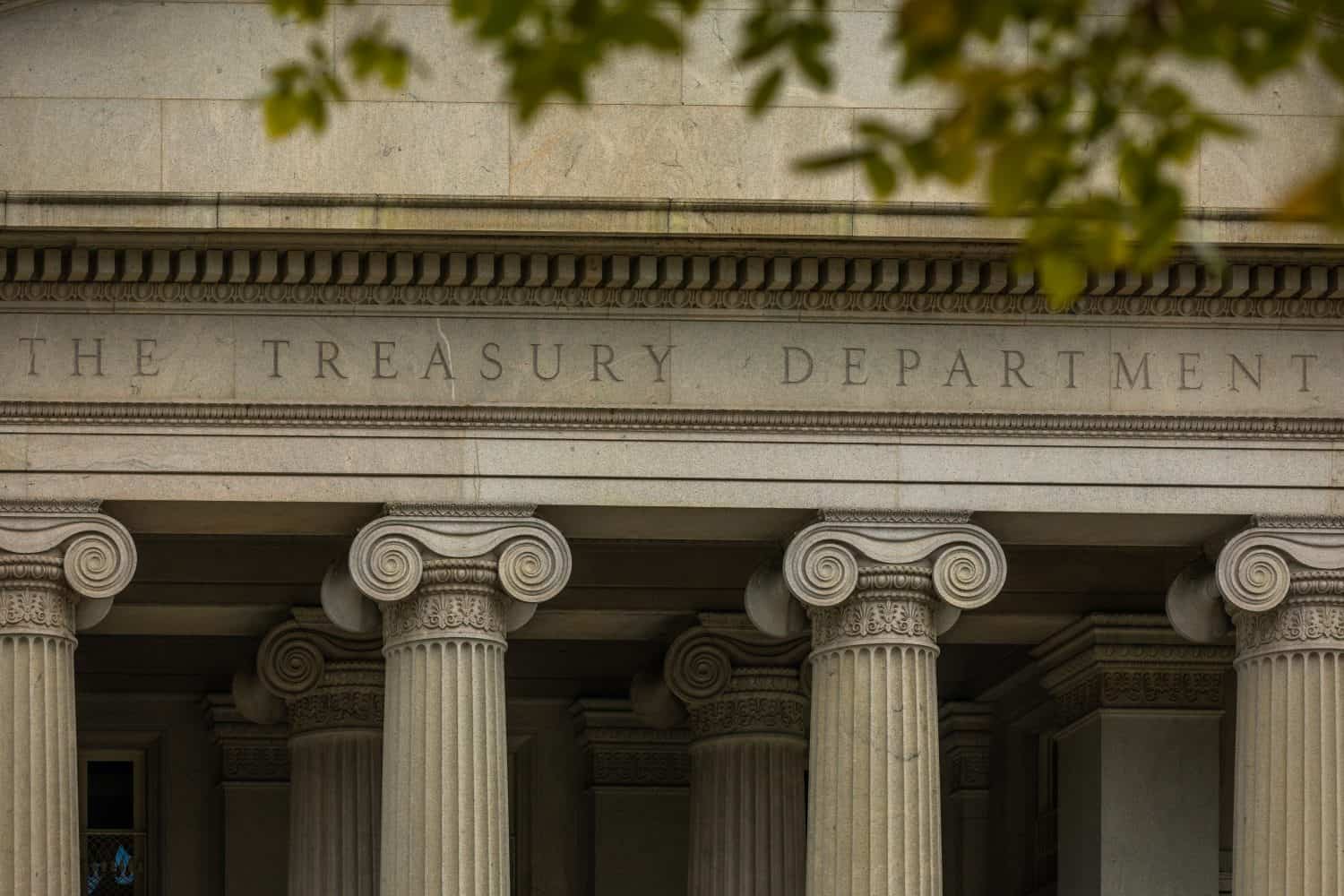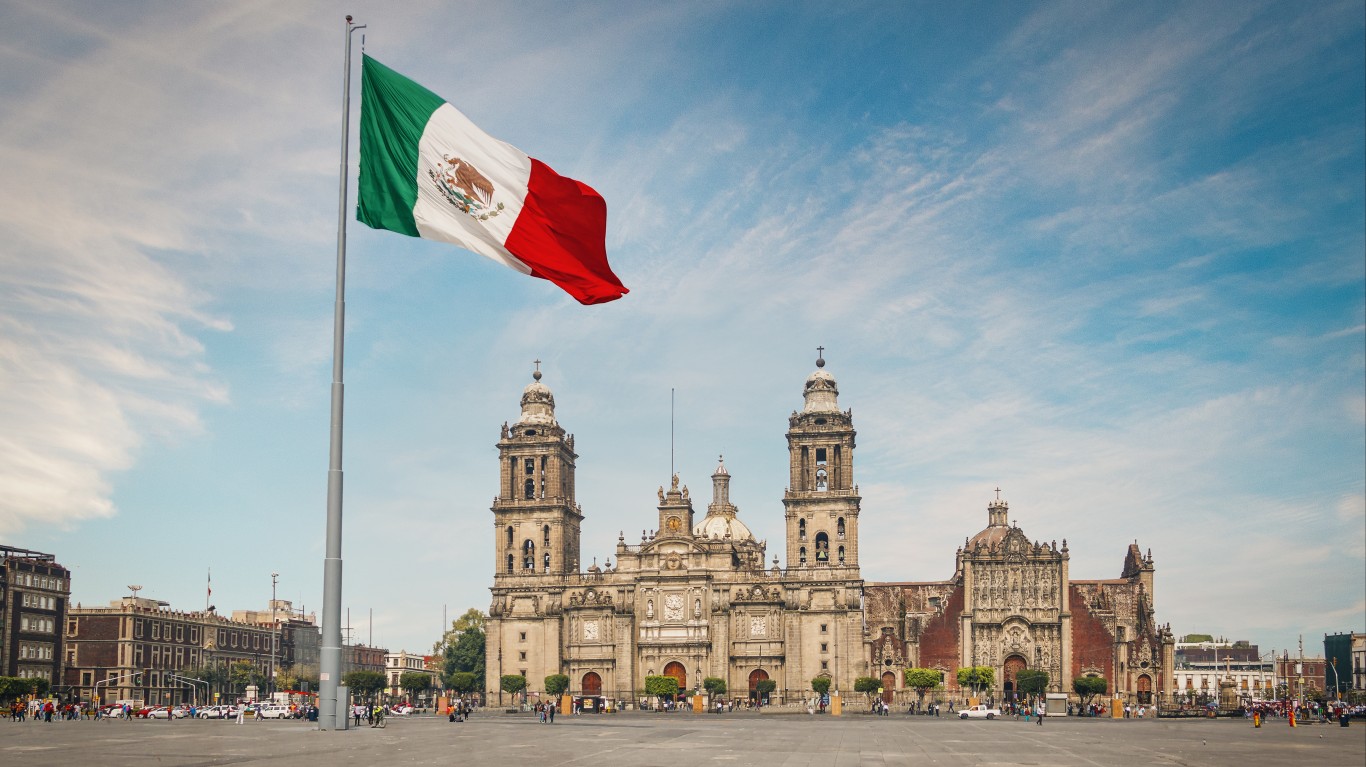Economy
This Foreign Country Holds More US Debt Than Any Other - and It's Not China

Published:
Last Updated:

The U.S. national debt has passed $36 trillion . . . and in the time it took you to read those words the interest on the debt went up another $100,000. How did we get to this point? Who do we owe all this money to? Should we be worried?
24/7 Wall St. Insights

Just like a family budget, the national budget goes into debt when spending is higher than revenues. Crises like wars and the Great Depression caused the United States to incur heavy debt in the past, but in more recent years the debt has increased because of military spending and social programs that are inadequately covered by tax revenues. On average, the U.S. government takes in about $4.4 trillion in revenues every year but spends $6.1 trillion.

Every day, the U.S. government spends $2.4 billion just on interest on the national debt. Projections indicate that within a decade, interest payments on the debt will surpass what the country spends on Medicare, Medicaid, or discretionary defense items. That’s money that could fund other underfunded programs or do new beneficial things like provide expanded mental health services for veterans, small business loans, improve school funding, build infrastructure, or protect the environment.

About 10,000 more Baby Boomers reach retirement age every day. This is straining the resources of programs like Social Security, Medicare, and Medicaid. Moreover, the elderly population also puts extra strain on the health care system. Healthcare in the U.S. costs twice as much on average as other developed countries like the U.K., Canada, Sweden, France, and Australia without producing significantly better results.

The United States government issues Treasury securities that are considered around the world to be stable investments for individuals, corporations, banks, and national treasuries. These are paid back with interest according to their maturity dates. The United States has maintained a high credit rating by paying its debts on time, making creditors willing to keep lending even as the country’s debt increases.
Following are the countries that hold the most U.S. Treasury securities. This data is from the U.S. Department of the Treasury and was current as of August 2024.

Historically, relations have not always been good between the United States and Mexico, but in recent decades the countries have integrated their economies with each other and with Canada in a free trade agreement that has benefited all three countries. Mexico has loaned the United States $95.7 billion.

Germany has loaned the U.S. $96.1 billion. Th0ugh they were enemies in the world wars, the two countries are close allies today, joined in a mutual defense agreement through NATO.

South Korea holds $122.9 billion in U.S. debt. The United States and other allies saved South Korea from an invasion by North Korea from 1950-53. Today, tens of thousands of U.S. troops are permanently stationed there to deter another attack by the heavily-armed and eccentric North.

Saudi Arabia is a partner with the United States in the Middle East based on shared interests in the oil industry and in deterring aggression from Iran. When the U.S. went to war to expel invading Iraqis from Kuwait, it was not only to save Kuwait, but to protect the nearby oil fields of Saudi Arabia. The Saudis have loaned the United States a total of $142.8 billion.

Norway, a NATO ally, has loaned the U.S. $164.4 billion. Norway is in a strategic location to monitor Russian activities in the Arctic and North Atlantic Oceans. It is also a major petroleum producer from wells in the North Sea.

Brazil, the largest country in South America, is considered along with India, South Africa, and a select few others, to be a future great power in the world economically and militarily. Brazil has loaned the U.S. $233.3 billion.

Hong Kong is a city-state that was previously a British colony but was returned to China when its lease expired. Today it is partially self-governing, though ultimately under the thumb of the PRC. The U.S. currently owes Hong Kong $235.8 billion.

Singapore is a prosperous city-state at the tip of the Malay Peninsula. Its location is next to one of the world’s busiest shipping lanes, with traffic flowing between Japan, China and other parts of East Asia to and from Europe, the Middle East, and India. The portion of the National debt we owe to Singapore is $239 billion.

India is the world’s most heavily populated country, with 1.45 billion people. Since we owe India $245.9 billion, it’s the equivalent of owing each Indian citizen about $169.

Taiwan is officially a part of China, but it functions like an independent country. When the communists took over the mainland, the Chinese government moved to the large offshore island of Taiwan but never formally declared independence. The United States helps arm and defend Taiwan, as mainland China continues to build up for a possible invasion of the island. The U.S. owes Taiwan $284.4 billion.

Switzerland is a small country in the Alps of southwestern Europe, but it plays an outsized role in world affairs. Famed for its strict neutrality, Switzerland has become a prosperous, secure safe haven for wealthy individuals, companies, and countries. Switzerland has invested $296.3 billion in U.S. Treasury securities.

France helped the United States win independence from Britain, doubled the size of the country by selling the Louisiana Territory, and gave us the Statue of Liberty as a love-gift. In turn, the U.S. defended and liberated France in both world wars and has been allied with it throughout the Cold War. Our good friends the French have loaned the United States $312.2 billion.

31.5 million Americans, about 9% of the U.S. population, have Irish ancestors. Ireland has loaned the United States $321.8 billion.

Belgium, a NATO ally and the headquarters of the European Union, holds $325 billion of the American debt.

Canada is one of the U.S.’ closest allies, literally and metaphorically. The two share thousands of miles of peaceful, undefended border and thoroughly integrated economies and a combined defense infrastructure as part of NATO. Canada has loaned the United States $365.4 billion to date.

A small country between France, Belgium, and Germany, Luxembourg is one of America’s NATO allies and holds $402 billion in U.S. Treasury notes.

The Cayman Islands are not an entirely independent country but are a self-governing Overseas Territory of the United Kingdom located in the Caribbean. The islands are a popular location for offshore bank accounts for wealthy people and corporations seeking a tax shelter. The Islands invest a good chunk of their profits in the U.S. national debt: $419.5 billion to date.

The U.K. is arguably the closest ally of the U.S. It holds $743.9 billion of the U.S. national debt. The two countries are linked in the NATO alliance, but their so-called “Special Relationship” makes them even closer allies than they are with other NATO countries.

With $774.6 billion in U.S. Treasury securities, the People’s Republic of China is the second largest foreign holder of U.S. debt. Relations between the two countries are strained over issues of trade, territorial disputes in the South China Sea, and China’s support for Russia in the war in Ukraine.

Japan holds the most U.S. Treasury securities of any country: $1.13 trillion. The two economies are deeply intertwined and have a mutual defense pact.

While the unprecedented size and continuing growth of the U.S. debt are concerning, here are a few thoughts that might help keep it in perspective:
1. Big debt, but also big economy
The U.S. economy is growing faster than the debt. The U.S. has a GDP of $29 trillion. The size of our debt compared to the size of our economy is more favorable than many other countries.
2. Friendly creditors
The vast majority of the overseas holders of the U.S. debt are friendly and closely-allied countries, many of whom depend on America for their defense. They are not trying to hurt the U.S., but just see a good business opportunity to loan money to a country they trust will pay it back.
3. What’chu gonna do about it?
No country can come and take our assets to collect the debt. The U.S. has the strongest military in the world. In the end, we could just simply refuse to repay the debt and no one could do anything about it except stop loaning us money in the future. And if the U.S. defaulted on its debt, it would disrupt the entire world financial system, which wouldn’t be good for anyone.
4. Above our pay scale
The debt problem is not going to be solved in our lifetime. Period. We can vote and lobby for candidates with spending priorities we agree with, but beyond that there is little any of us as individuals can do about this macro-scale problem.
So no matter how serious a problem is, if you have limited or no power to affect it, then there isn’t much point in worrying about it. It makes sense to be a good citizen, pay your taxes, vote according to your conscience, and find things to do that make your life and the lives of people around you better. And if 346 million Americans did that, well then we might see this whole thing start to move incrementally in a better direction.
The last few years made people forget how much banks and CD’s can pay. Meanwhile, interest rates have spiked and many can afford to pay you much more, but most are keeping yields low and hoping you won’t notice.
But there is good news. To win qualified customers, some accounts are paying almost 10x the national average! That’s an incredible way to keep your money safe and earn more at the same time. Our top pick for high yield savings accounts includes other benefits as well. You can earn up to 3.80% with a Checking & Savings Account today Sign up and get up to $300 with direct deposit. No account fees. FDIC Insured.
Click here to see how much more you could be earning on your savings today. It takes just a few minutes to open an account to make your money work for you.
Thank you for reading! Have some feedback for us?
Contact the 24/7 Wall St. editorial team.